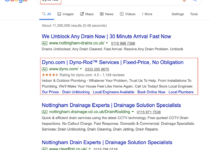Retro Design Elements: How Nostalgia Drives Modern Engagement
The boardroom goes silent as the presentation concludes. What captivated this room of seasoned marketing executives wasn’t cutting-edge AI or the latest digital innovation – it was the resurrection of design elements from decades ago. Retro design isn’t just having a moment; it’s driving measurable results across industries, with brands reporting engagement increases when nostalgic elements are thoughtfully integrated into modern campaigns. Here are the retro design elements to include in your brand’s design.
Key Takeaways
- Retro design is making a comeback in several industries. Unlike vintage design, retro combines past looks with modern influences.
- Consumers love retro design because it evokes feelings of nostalgia.
- To implement retro design, brands must understand the main elements of this trend, specifically color palettes, typography, textures, and patterns.
- Brands have used retro branding in the SaaS, interior design, and fashion industries.
- Best practices for using retro design include layering, prioritizing functionality, aligning your audience, implementing technology, using the right font, and using retro looks selectively.
- Common mistakes when using retro design include overusing themes from one era, inaccurate representation, limiting modern technology, and using design elements unfamiliar to your audience.
- Measure KPIs related to graphic design to ensure your retro looks have a positive outcome.
- The most prominent retro design future trends include AI use and mixing eras.
Defining Retro Design: Beyond Simple Nostalgia
Retro design represents more than just recycled aesthetics from bygone eras. It’s a deliberate reinterpretation of historical visual language through a contemporary lens. Unlike vintage design, which aims to reproduce period-specific looks, retro design selectively borrows recognizable elements from the past while adapting them to modern sensibilities and technological capabilities.
“The power of retro design lies in its ability to create an emotional bridge between familiar past experiences and current contexts. It’s not simply about looking backward, but about bringing the emotional resonance of the past into conversation with present needs.”
This distinction matters significantly for marketers and designers. Retro design isn’t about perfect historical accuracy – it’s about capturing an era’s essence and emotional associations. This flexibility makes it particularly adaptable to modern marketing challenges.
The Psychology Behind Retro Design’s Engagement Power
Why do people love retro design? Its popularity is multifaceted; emotional connections, sentimental value, and personal memories contribute to reviving retro elements, enhancing its appeal for the long term.
The remarkable effectiveness of retro design elements isn’t just an aesthetic preference—it’s rooted in cognitive psychology. 60% of consumers say they feel positive about brands that leverage nostalgia.
Nostalgia functions as an emotional anchor in uncertain times. When consumers encounter familiar design elements from their past, several psychological processes activate:
- Trust: Familiar visual cues from the past create immediate comfort.
- Capturing attention: Distinctive period aesthetics stand out.
- Memory: Past associations transfer to new brand experiences.
- Identity reinforcement: Generational design markers strengthen demographic connections.
Core Retro Design Elements and Their Modern Applications
Practical retro design requires understanding the building blocks that define different eras. Each period in design history features distinct visual signatures that can be deployed to evoke specific emotional responses and associations.
Color Palettes That Define Eras
Color selection serves as perhaps the most immediate signifier of retro influence. According to data from Pinterest’s 2025 Trends Report, searches for “Vintage Americana” color palettes have increased by 145% this year, as reported by Bella Virtual Staging, demonstrating renewed interest in classic color combinations.
| Era | Signature Colors | Modern Application |
|---|---|---|
| 1950s Mid-Century | Mustard yellow, avocado green, burnt orange | Digital interfaces with softened saturation for reduced eye strain |
| 1970s Psychedelia | Earth tones, vivid purples, warm oranges | Website gradients and social media templates |
| 1980s Memphis Design | Neon pink, electric blue, bright yellow | Attention-grabbing CTAs and interactive elements |
| 1990s Tech Nostalgia | Teal, purple, bright patterns | App interfaces and loading animations |
Typography: Letterforms That Transport
Typography often serves as the most direct reference in retro design. Font selection can instantly communicate a specific decade or cultural moment:
- Art Deco (1920s-30s): Geometric sans-serifs with decorative elements.
- Mid-Century (1950s-60s): Clean, highly legible sans serifs with occasional playful elements.
- Groovy Era (1970s): Rounded, flowing letterforms with exaggerated proportions.
- Digital Dawn (1980s-90s): Pixelated, technical, and early digital-inspired fonts.
Modern implementations often pair these period-specific display fonts with contemporary typefaces for body text, maintaining readability while evoking the desired era through typographic touchpoints.
Textures and Patterns That Define the Past
Hexagon, checkerboard, Moroccan tiles. These patterns are different but create an ambiance that transports users to past eras. If you want to break away from solid colors, patterns can add interest and depth to any design. Businesses can use nostalgic patterns for borders, backgrounds, and other decorative elements.
Texture application represents one of contemporary retro design’s most technically evolved aspects. Today’s advanced digital tools allow designers to simulate analog artifacts like:
- Film grain and photographic imperfections
- Paper textures and print inconsistencies
- Material-specific characteristics (vinyl records, chrome finishes, etc.)
- Time-worn degradation effects
These texture applications transform flat digital interfaces into rich, tactile-seeming experiences that trigger powerful sensory memories. The technical advancement of 3D rendering and material simulation has elevated retro design from a simple visual reference to an immersive sensory experience.
Industry Applications: How Sectors Are Leveraging Retro Design
Many companies use retro branding to evoke a sense of nostalgia, specifically in their packaging, logos, and advertising. The versatility of retro design elements has led to successful implementations across diverse industries, each adapting nostalgic aesthetics to specific business challenges.
Digital Interfaces: Humanizing Technology Through Familiarity
In SaaS, differentiation through design has become increasingly critical. Facing the challenge of standing out in a saturated market, Webflow implemented a retro-futuristic interface that fused bold vintage colors and geometric patterns with cutting-edge AI features. The results were remarkable—increased user engagement, higher average session durations, and improved click-through rates, according to the f1Studioz Blog.
This approach works particularly well for digital products because it creates an appealing contrast between cutting-edge functionality and comfortingly familiar visual language. One Webflow user noted, “The interface feels both revolutionary and like an old friend.”
Interior Design: Physical Spaces Transformed by Time-Travel
The interior design sector has embraced retro elements with particular enthusiasm. Bella Virtual Staging exemplifies this trend’s commercial potential. Facing challenges in digitally marketing retro and mid-century-styled properties, the company developed AI-powered virtual staging with authentic period aesthetics. The results speak volumes—virtually staged retro homes attracted 40% more online views, and properties with mid-century modern virtual staging sold 31% faster than unstaged equivalents.
“The strategic application of retro design elements in virtual staging creates immediate emotional connections with potential buyers. These aren’t just design choices – they’re psychological triggers that activate specific lifestyle aspirations.”
Fashion: Cyclical Innovation Through Heritage
The fashion industry has perhaps the most established relationship with retro design cycles, with heritage references appearing consistently throughout luxury brand collections.
Alexander McQueen demonstrates how calculated retro inspiration can revitalize even established luxury brands. Facing the challenge of standing out in the crowded luxury market, McQueen reinterpreted retro design elements by blending vintage craftsmanship with futuristic twists. This approach garnered critical acclaim and significantly enhanced brand prestige, according to the International Journal of Costume and Fashion.
This strategy transfers readily to marketing and branding applications that increase awareness, where vintage-inspired typography and color palettes can create distinctive visual identities that stand apart from competitors.
Best Practices for Retro-Inspired Design
- Contextual layering: Blend 2-3 era-specific elements with modern design infrastructure.
- Functional prioritization: Never sacrifice usability for period accuracy.
- Audience alignment: Match retro references to your audience’s generational touchpoints.
- Technical modernization: Adapt historical elements to current technical standards.
- Font choices: Use a readable font reminiscent of vintage signs and ads.
- Strategic restraint: Use retro elements selectively at key engagement points.
Consider how you might integrate retro design elements into your graphic design strategy while maintaining brand consistency. The most successful implementations use retro influences to enhance, rather than define, the core brand identity.
Common Pitfalls to Avoid
When implementing retro design elements, beware of these frequent missteps:
- Over-commitment to a single era: Creating period museums rather than functional designs.
- Inaccurate historical references: Mismatching elements from different decades.
- Technical regression: Adopting historical limitations alongside aesthetic elements.
- Demographic disconnection: Using references unfamiliar to your target audience.
The most successful retro design implementations maintain a clear connection to traditional marketing methods while embracing modern technical capabilities.
Measuring Success: The ROI of Nostalgic Design
Implementing retro design elements should ultimately drive measurable business outcomes. Establishing clear metrics helps justify design investments and refine strategy over time.
Key Performance Indicators for Retro Design
Track these metrics to evaluate the effectiveness of retro design implementations:
- Engagement metrics: Time on site, click-through rates, interaction depth.
- Conversion impact: Changes to conversion rates across the customer journey.
- Brand perception: Sentiment analysis and brand association metrics.
- Audience expansion: Demographic changes in customer base.
- Competitive differentiation: Share of voice and distinctive brand assets.
Analyzing these metrics concerning specific retro design implementations provides actionable intelligence for ongoing optimization. Many brands discover that particular eras or elements resonate most strongly with their specific audience segments, allowing for increasingly targeted design strategies.
For e-commerce businesses, retro design elements can transform product page design, creating distinctive shopping experiences that stand apart from competitors. Similarly, content creators can leverage nostalgic visual cues in YouTube thumbnail design to increase click-through rates.
The Future of Retro: Evolving Nostalgia in Design
Retro design is making a huge comeback this year. While retro design draws inspiration from the past, its implementation continues to evolve through technological advancements. Emerging trends suggest several exciting directions for retro design elements:
- AI-generated authentic aging: Machine learning algorithms creating realistic vintage effects.
- Era-adaptive interfaces: Designs that adjust retro elements based on user demographics.
- Mixed-era fusion: Intentional blending of multiple historical periods in a single design.
- Haptic nostalgia: Physical interaction patterns that reference analog experiences.
These innovations extend beyond visual aspects into multisensory design territory, creating more immersive nostalgic experiences.
Retro Design Elements: The Timeless Appeal of Looking Back
Retro design elements offer more than aesthetic variety – they provide strategic tools for creating emotional connections with audiences across industries. When implementing retro design, understand the psychological drivers behind nostalgia’s effectiveness and apply period-specific elements with contemporary technical excellence. The most successful implementations balance nostalgic appeal with modern functionality, creating experiences that feel simultaneously fresh and familiar.
For marketers and designers seeking distinctive visual approaches, retro design elements provide proven tools for standing apart in crowded marketplaces. The past, it seems, holds keys to future engagement success.
Work with the leading creative agency to develop a distinctive visual identity that leverages the power of retro design elements within a comprehensive brand strategy.
The post Retro Design Elements: How Nostalgia Drives Modern Engagement appeared first on Single Grain.


